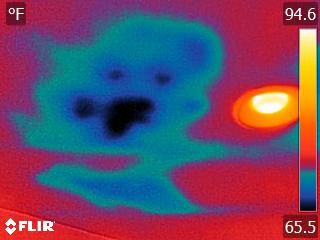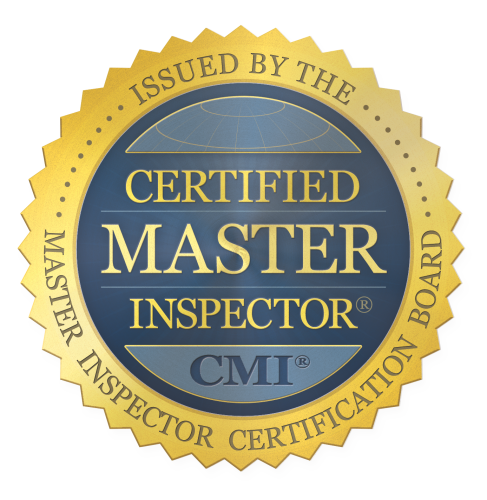Thermal Imaging Is Sometimes Science And Sometimes Art
Depending on the palette used, thermal infrared images can reveal different things. On the palette I am using for this image a wet spot would typically appear as blues, lavenders and purples.
Infrared cameras, contrary to some phony ads I see, do NOT see inside walls! They don't have X-ray vision. They see very long light waves, not visible to our eyes. And they see them very well.
As such, what the camera "sees" are differences in temperatures. That's the science part! A cooler temperature can indicate moisture, but NOT NECESSARILY! Something as innocuous as the shade of a tree on the side of the house can create a temperature difference in an image which is minute, BUT LOOKS LIKE MOISTURE. That is the art part!
That is where the experience of the operator/technician/super-cool infrared guy comes in! We experienced thermographers are worth our weight in gold!
My camera produces images of 120x160 pixels, which was state of the art 7 years ago when I bought my camera and still very good today. It also determines levels of temperatures in tenths of a degree Fahrenheit. So an image can indicate one thing or another!
For this reason it is important to couple an infrared exam with a moisture meter.
Take this image to the right. That blue and dark blue area is EXACTLY what a wet spot might look like. But, its location in the house was weird. There was little above that spot which could have produced moisture. The center of the house, and therefore the ridge vent, was not overhead. Nor was there any plumbing penetration through the house.
From the attic, the roofing above this spot looked dry and there was no evidence of dripping moisture on the insulation. The moisture meter registered no moisture at all. So, what caused this purple spot?
Just above this is the large, center trunk of the flexible HVAC line, off of which run each of the spurs which service the rooms on each side of the hallway. And, feeling around, just above this spot the flex line had a tear, perhaps there even from original construction!
The HVAC system has been alternatively heating and cooling the attic! Easy to fix with aluminum tape, that tear over time could have caused mold. And this is the baby's room.
WITHOUT AN INFRARED CAMERA THIS SPOT OF LEAKING AIR MIGHT NEVER HAVE BEEN FOUND. And therefore the repair might never have been made! And this is an easy and permanent repair.
My recommendation: if you have one in your area (not all home inspectors have this technology or the training to use it), call in a thermographer to sweep the entire house. They can find many things - moisture related to plumbing or roof, electrical issues, insulation problems, even termites or other fauna inside the walls! AND, best of all, they are all really, really cute...

Comments
Post new comment